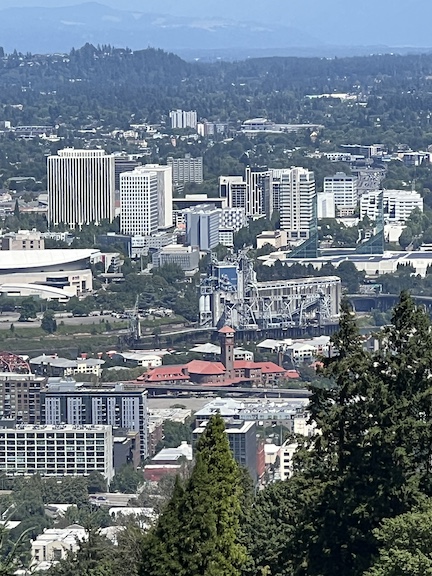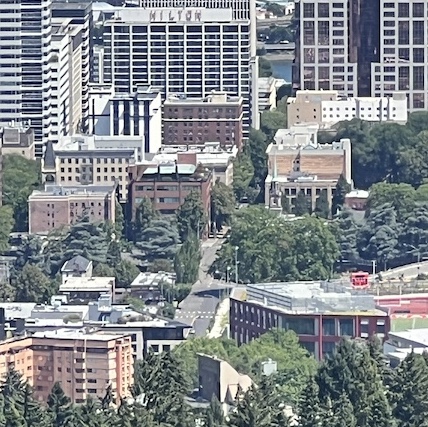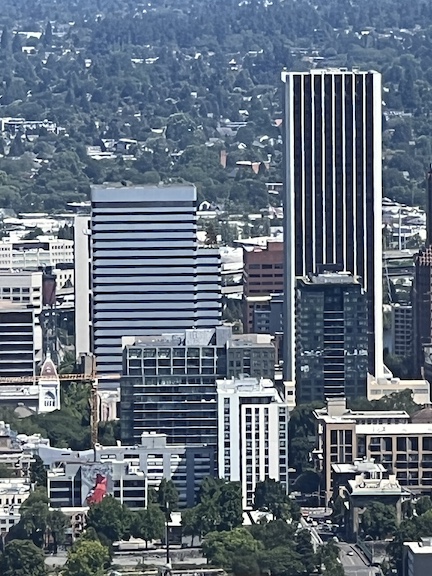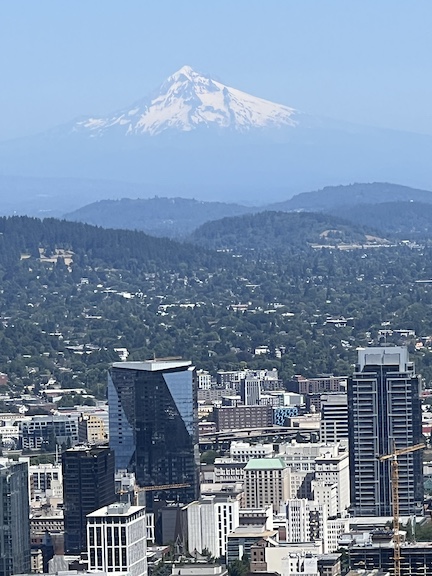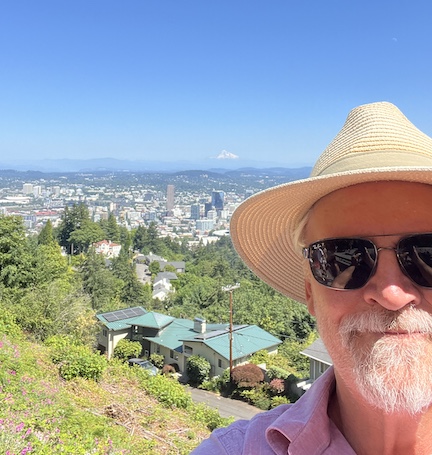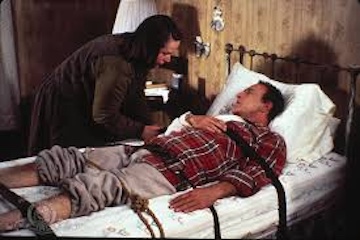Portland history used to be easy.
Two old guys flipped a coin in a clearing and here we are living happily ever after.
That’s my story, but I’m not sticking to it when I tell the Portland story.
Portland started as a rest stop along the Willamette River, a place for travelers to get out of the canoe, the boat, for a rest on their way to Oregon City.
I did the same thing Saturday, pulling up for a late breakfast at the King Tide.
For the best scenery, reserve a table outside on a sunny day, where diners can catch a glimpse at the Hawthorne Bridge between the trees. A stroll through the South Waterfront Park is a fine finish to a meal of oysters and risotto.
My travelers wanted to know more about the city? Perfect.
But first there had to be an agreement with my wife not to bore the hell out of her.
We share a historical love affair with Portland, from where we first met, taking walks under the old Lovejoy ramp off the Broadway Bridge, and my squirrelly apartments.
Back then I rented three different apartments on the same block for a reputation for not moving too far away.
I’ve dragged people down memory lane so often my wife gets dazed and confused.
She knows the story so I skipped that part.
Portland Had A Chance
Imagine a sports venue built in SW Portland with easy access and places for fans to go after a game.
It almost happened.
While it brought in new buildings, thousands of jobs and increased tax revenues, urban renewal in South Portland also destroyed small businesses, pushed people out of long-time family homes, and dislodged a large group of residents – mostly older, single men – who had been living in the cheap walk-up apartments that dotted the district.
The clusters of Jewish and Italian residents in the area were scattered and churches and synagogues were replaced by high-rises, parks and fountains.
The project brought in new, stylized architecture but destroyed hundreds of classic Old Portland homes that dated back to the 1870s and 1880s.
Call it urban planning, urban renewal, or a cluster-fuck of too many interests beyond the good of the city when the Moda Center is located in a neighborhood that slides into an abandoned ruin between games and concerts and other events.
I’m not saying moving to the Eastside was bad planning because I don’t shit-talk any part of Portland.
The Keller Auditorium is the current moment of truth.
The third proposed option (for the Keller) would take the theater across the Willamette River to Northeast Portland’s Lloyd Center.
But the idea of moving the theater out of downtown and to the east side received practically no support in public testimony, with just one person speaking in favor.
Portland grew from being a rest stop, to a small town with docks and warehouses along the river, to a city where downtown mansions were razed for blocks of commercial properties.
Sound familiar?
Portland People On The Move
Moving on to Portland meant starting someplace else.
People came up the river, across on wagons, rode the rails to Union Station, drove, and eventually flew in.
They came for the fur, the farmland, the timber, and fish.
They came for the Lewis and Clark Exposition.
A year after the event, the paper reported: “the Lewis and Clark Exposition officially marked the end of the old and the beginning of the new Oregon.” The Exposition helped boost the city’s population from 90,000 to 207,000 between 1900 and 1910; during the same period, the state’s population increased by 70 percent.
They came for the Kaiser shipyards.
A large number of wartime workers who had migrated to Oregon remained afterwards; Portland’s population escalated from 305,000 in 1940 to 374,000 ten years later.
They came on the spur of the moment, at least I did. That’s how I explain why I rode the bus from NYC to PDX.
I had a future in Portland different than Brooklyn where my future would have been pre-determined if I married into an Italian family.
Instead I came here to convince a beautiful young woman she’d be better off with someone who wasn’t me.
It took about three months.
After that I walked around NW Portland and met someone who needed convincing of the same thing.
It’s been close to forty years and I’m still at it.
Portland Comeback Foot Traffic
With Portland baby boomers growing long in the tooth and moving out to the suburbs, who needs to step up?
Them.
It’s a comfort seeing older people navigating the urban terrain fearlessly.
Instead of hiding inside on a blue couch watching re-runs of favorite shows, or mowing a yard, washing a car, why not perform a civic duty and dress up in Portland friendly gear, drive downtown, and walk around until you feel like getting something to eat?
I was downtown for the Blues Fest last week from Thursday to Saturday.
And yesterday.
The key for me is not looking like a victim, or victim shopping.
Wife: It wouldn’t hurt you to smile.
Me: I am smiling.
Wife: That’s a smile, huh?
Me: More of an expression, the same expression I’ll show whoever wants to give us a try.
Wife: What’s that mean?
Me: A lot of people feel guilty over things they’ve done. I want whoever sizes us up as a mark to know I won’t be feeling guilty for kicking their ass.
Wife: Does that sound normal coming from a sixty-nine year old?
Me: You’ve got something better?
Wife:
Me: I guess I could use you as a bargaining chip with bad guys.
Wife: Or I could use you.
Me: You’re smiling too much.
